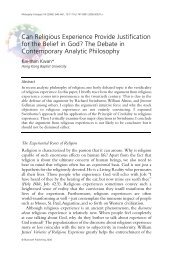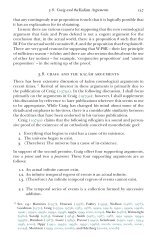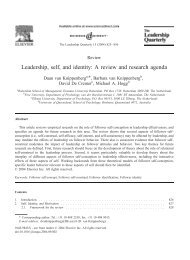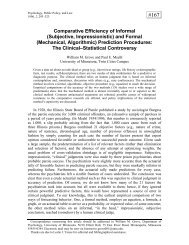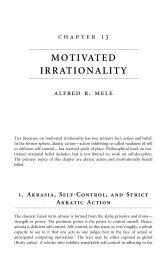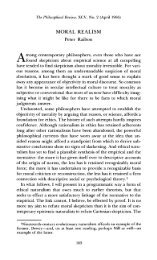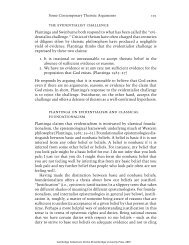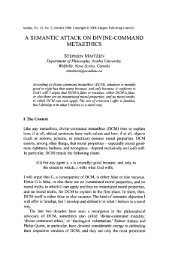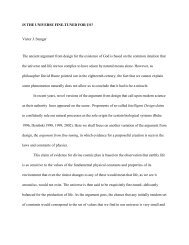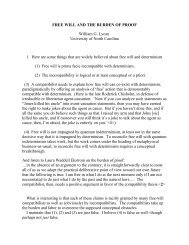Atheism and Theism JJ Haldane - Common Sense Atheism
Atheism and Theism JJ Haldane - Common Sense Atheism
Atheism and Theism JJ Haldane - Common Sense Atheism
Create successful ePaper yourself
Turn your PDF publications into a flip-book with our unique Google optimized e-Paper software.
226 J.J. <strong>Haldane</strong><br />
it is here that the problem arises. For Smart’s comments on Behe, see<br />
pp. 213–14.<br />
The development of species depends upon an array of complex activities<br />
occurring within organisms at the biochemical level. These comprise the<br />
‘black box’ of whose contents Darwin had no idea. Complexity as such is<br />
to be expected, but that which Behe has in view is not simply a matter of<br />
intricacy <strong>and</strong> detail. Rather, as in the case of the origins of cellular organisms,<br />
it is that of interdependent functionality between parts. Behe’s favoured<br />
example is the bacterial flagellum. This is an element located in the membrane<br />
of a cell which acts as a rotary propeller. The ‘motor’ is located at<br />
the base of the flagellum <strong>and</strong> is itself composed of several parts. Like many<br />
other biological systems this has the feature that in the absence of any one of<br />
its components <strong>and</strong> of their relevant interaction, it would not function.<br />
One cannot say, therefore, that the system itself evolved piece by piece, <strong>and</strong><br />
it would not be credible to suppose that in this <strong>and</strong> the other cases of irreducible<br />
complexity the systems resulted from accidental contemporaneous<br />
assemblages of their interdependent elements. The systems only work if all<br />
parts are present, correct <strong>and</strong> functioning cooperatively. Recalling Paley’s<br />
example of the watch, Behe offers as an analogy the construction <strong>and</strong> operation<br />
of a traditional mouse trap. If any of the components is missing or<br />
broken, the trap fails to function; <strong>and</strong> one cannot envisage a more primitive<br />
‘proto-mousetrap’ operating without a spring, say. The system only exists<br />
when all its parts are in place <strong>and</strong> are performing in accord with the overall<br />
functional structure.<br />
Like the case of reproduction (see chapter 2, section 4, above) irreducible<br />
complexity does not admit of degrees <strong>and</strong> therefore it cannot be represented<br />
as emerging by stages. Either an entity exhibits it or it does not, <strong>and</strong> the<br />
transition from one condition to the other is not naturalistically explicable.<br />
Of course, if it were an artefact then it would be accountable for by reference<br />
to design. Frederick Hoyle <strong>and</strong> Francis Crick have speculated about extraterrestrial<br />
agents sowing seeds of life, but as was said earlier this hypothesis<br />
is regressive (to say nothing of its implausibility). So we face an eliminative<br />
induction. There are, I suggest, only three broad possibilities. Naturalism<br />
maintains that functional animate complexity has evolved by natural means<br />
from non-functional, inanimate matter. Panvitalism would have it that irreducibly<br />
complex organic life of some sort has always existed <strong>and</strong> that it has no<br />
natural explanation, which is to say it either has no explanation at all, or that<br />
its explanation is design. Creationism maintains that irreducible complexity<br />
<strong>and</strong> other aspects of natural teleology are due to design (whether they have<br />
always existed is a separate matter). Naturalism, I have argued, must fail for<br />
want of being able to account for radical emergence. Panvitalism is either<br />
silent on the issue of explanation or defers to Creationism. Thus, the hypothesis



